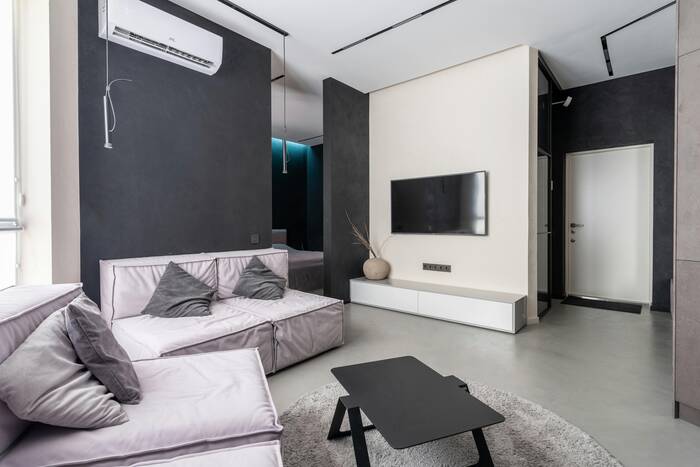
Without ductwork, cooling a house might provide special difficulties. However with the appropriate techniques, you can make your living area cool and comfortable. Take into consideration these five suggestions to combat the heat, regardless of whether you favor ductless conditioning or live in an older home without central air.
1. Embrace Ductless Mini-Split Systems
Installing ductless mini-split systems is one of the best options for houses without ducting. These cutting-edge systems, which provide zonal cooling without the need for ducting, are made up of interior air-handling devices and an outside compressor. With the ability to manage each indoor unit separately, you may adjust the temperature in various rooms according to user habits and personal preferences. Mini-split systems enable precise climate control and may eventually result in cheaper utility costs because of their energy efficiency and flexibility, even if their initial cost of installation may be more than that of certain alternatives. These systems are flexible enough to adjust to different home structures and layouts, allowing you to adjust your cooling efforts as necessary.
2. Optimize Natural Ventilation
Use natural airflow to its fullest potential to cool your house without the need for ducting. Place windows in a way that promotes cross-ventilation and lets cool breezes easily flow throughout your living area. Installing window vents may improve ventilation without sacrificing security, allowing you to enjoy fresh air in a secure setting. Moreover, utilize ceiling fans wisely to enhance airflow and provide a cool breeze around your house. You may greatly lessen your need for mechanical cooling systems by utilizing natural ventilation, which will help you create an environmentally conscious and environmentally friendly house. Your control over natural ventilation may be further enhanced by integrating smart home technology, such as controlled window vents or fan systems, to maximize comfort and energy savings.
3. Invest in Portable Air Conditioning Units
For houses lacking ducting, portable air conditioners are an exceptional and affordable option. Because of their mobility, these units may be placed from room to room and provide spot cooling exactly where it’s required. The BTU (British Thermal Units) rating should be considered when choosing a portable air conditioner in order to match the cooling capacity to the size of each space, energy efficiency to reduce running expenses, and noise levels to create a pleasant living space. Even while they aren’t as feature rich as central air systems, portable air conditioners are nevertheless a useful cooling solution, particularly for smaller houses or certain living spaces, as they let you designate comfort zones based on your daily routine.
4. Explore Air Conditioners Types
For cooling homes without ducting, window air conditioners are still a common option. These devices effectively supply cold air to the inside by fitting right into an opening or a specially-made gap in a wall. To maximize cooling effectiveness, make sure the window air conditioner you choose is the right size for the area. Furthermore, search for a high quality wall-mounted air conditioner and heater combo that provides both adjustable fan speeds and energy-saving capabilities for a more personalized and effective cooling experience. Although they might not be able to chill a whole house, window units work well to cool specific rooms or smaller living areas, which makes them a useful and affordable choice for focused temperature management.
5. Enhance Insulation and Seal Air Leaks
For homes without ducting, maintaining a consistently cold interior requires improving insulation and caulking air leaks. Heat can enter your home through inadequate insulation, which reduces the effectiveness of cooling systems and may raise energy usage. To build an insulating layer that aids in controlling indoor temperatures, evaluate and improve the insulation in important locations, such as attics, barriers, and floors. To stop warm air from flowing and cold air from departing, locate and plug air leaks surrounding doors and windows. These actions not only increase the efficiency of your air conditioning units but also cut total energy consumption, which lessens the strain on your cooling systems and eventually lowers your utility costs.
Conclusion
In conclusion, using a variety of techniques and a careful approach are necessary for cooling homes without ducting. A cool and pleasant living area may be achieved by implementing any number of tips, such as installing a window or portable air conditioning units, embracing natural ventilation, going with ductless mini-split systems, and improving insulation. Even in homes without ductwork, you can battle the heat while enjoying a refreshing atmosphere by understanding your home’s specific conditioning demands and putting these recommendations into practice.
